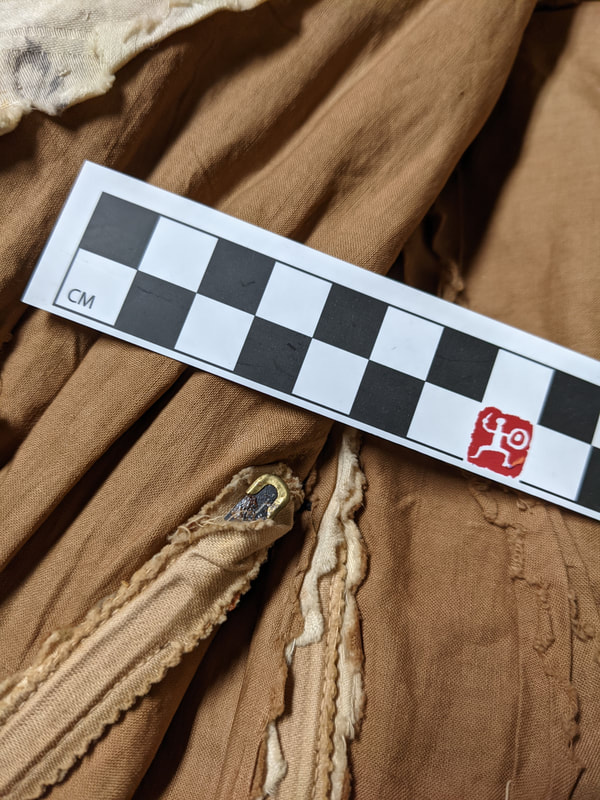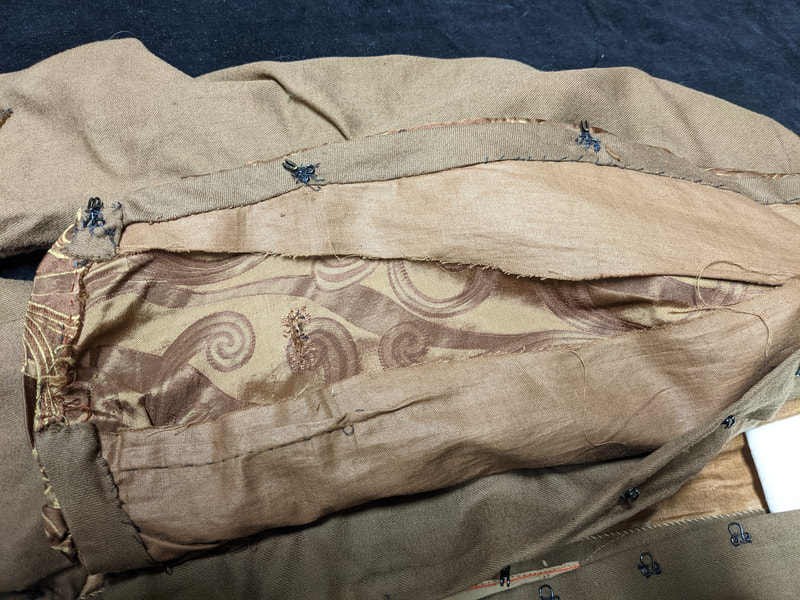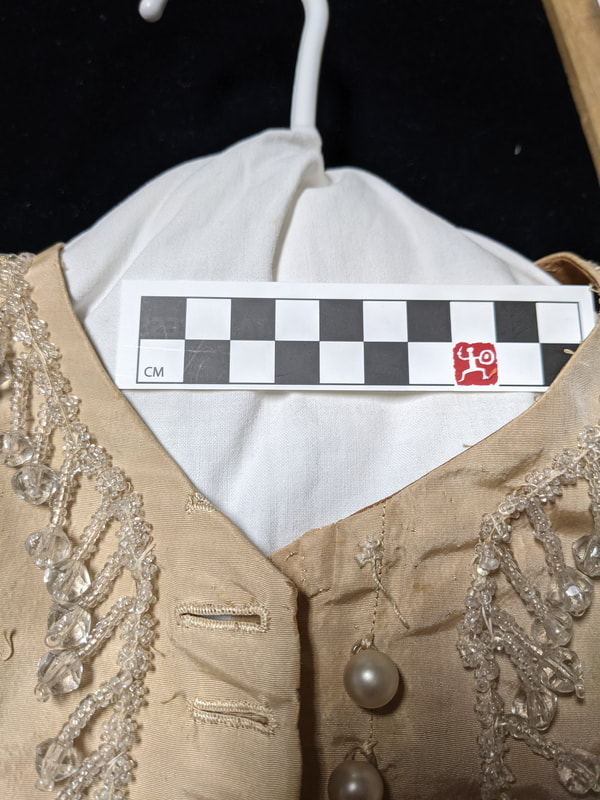Taking into consideration the stability of a garment is essential for determining how to both store and display it. It is important to note that we can learn a great deal from a garment that is damaged, sometimes more so than one that is complete. When the inner parts of a garment become visible we can make inferences about construction methods, resource utilization, and past alterations which all help to tell a better story about a particular item. It is also important to note that being able to identify the hidden materials in an item can help us figure out how to preserve it better and potentially even narrow down the time period in which it was made.
In the first two photos below you can see baleen bones emerging from their casings, or boning channels. The first image shows a broken strip of clear amber colored baleen poking through a boning channel which is reinforced with a blue herringbone stitch. The second image shows a baleen strip which has been covered in a metal cap to prevent it from poking through the fabric. It is possible that the metal capped baleen has been saturated in a resin or adhesive to stabilize it, and you can see that it has a drastically different texture than the baleen in the first photo. The adhesive itself may pose a risk to the structure of the surrounding fabric if exposed to moisture and is important to take note of. Both of these garments were constructed within fifteen years of each other, so it is interesting to notice the variance in available baleen in that particular point in time.
The third photo is one of my personal favorites--it shows the neckline of a beige silk dress with clear glass beads. If you pay close attention to the closure system you can see that there is the remnant of an extra button hole at the very top, just barely peeking over the edge of the fabric. This tells us that at one point there was more fabric there, necessitating more button holes. Perhaps this dress originally had a high collar and was altered to have a lower cut. Using other context clues from that garment's construction it became evident that the dress was made some time in the 1870s but had been altered to fit the styles of the 1890s. I wouldn't have noticed that this dress was manufactured twenty years prior to its current style if I hadn't seen the button hole.
The last photo shows the torn lining of a bodice, with the back of the fashion fabric visible through the tear. In this particular instance, being able to see the back of the fashion fabric allows us to determine whether it is a brocade or a damask. In this instance the back of the fabric is a smooth reverse pattern of the outside, so it is a damask. A brocade would have had a multitude of loose threads on the back as a byproduct of the weaving process.
All of these details are visible because of the damage to these garments. It is the duty of museum staff to preserve historical objects, but it is also our job to tell their stories. Seeing these minute details allows us to make deeper connections to the history of an item and tell their stories to the public.
Article written by Intern Emily Price





 RSS Feed
RSS Feed